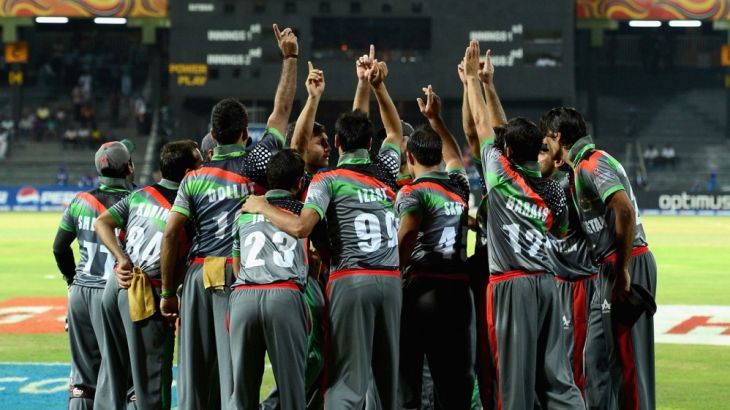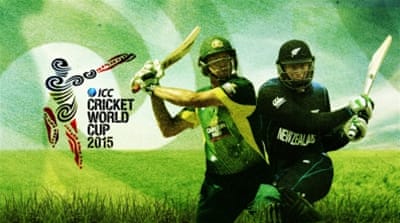Refugee camps, gunshots, missiles and the World Cup
The Afghanistan cricket team marks its maiden appearance at cricket’s mega event but their journey was not the smoothest

The nights were filled with sounds of gunshot and as missiles made their way across the sky – those were not shooting stars – little did one think about sport, let alone being at a World Cup.
| Did you know? |
| Mohammad Nabi was born and raised in a Peshawar refugee camp and has played domestically in England, Pakistan and Bangladesh. Nawroz Mangal was captain when Afghanistan qualified for the 2010 World Twenty20. He holds the record for highest individual ODI innings by an Afghan.
Asghar Stanikzai struck 90* against Bangladesh to help his side claim a first ODI win over a Test-playing nation.
Samiullah Shenwari is another to grow up in a Peshawar refugee camp. He has played in all but one of Afghanistan’s ODIs.
Hamid Hassan is the country’s leading wicket-taker and became only the second Afghan to take a ‘five-for’ in an ODI.
Shapoor Zadran was selected for the national team after coming through a trial of 500 players which he kept secret from his family.
Usman Ghani, 18, is the youngest player in the squad.
|
The passion and the zeal existed in numbers. Huge numbers. The opportunities didn’t. The walls started bearing bullet marks and the windows were shattered by the attacks and not cricket balls.
Keep reading
list of 4 itemsAustralia’s Smith joins Washington Freedom before MLC cricket season
Jadeja reaches IPL cricket milestone in Chennai’s win over Kolkata
Sri Lanka beat Bangladesh by 192 runs to sweep Test series 2-0
Optimism and hope were dying. But maybe the Afghans didn’t know anything but optimism and hope.
The war, insurgency and Taliban rule raged on across the border as Afghan refugees headed for the safety of refugee camps in Pakistan. Somewhere, in one of those refugee camps, future stars were given birth to.
One of them was Mohammad Nabi, the tall, well-built all-rounder who would one day do the unthinkable and unimaginable – lead the national Afghanistan cricket team to the World Cup.
Humble beginnings
Cricket is idolised across Pakistan and Afghanistan but most children never get to see proper equipment or lush outfields. The equipment on the streets is often bare and shoddy – a bat, a makeshift wicket and a tennis ball wrapped up in tape.
Those who had travelled across the north bear witness to dusty fields and an army of enthusiasts acting their trade with bat and ball. Shoes are for the privileged.
“I played cricket from a young age, but given the circumstances and what was going on around us and in Afghanistan, there was no way I would’ve imagined playing for my country let alone captaining it,” Nabi had told Al Jazeera.
Nabi persevered. He devoted a lot of time to cricket and with luck, he managed to train at a local cricket club.
He had the talent and the urge, but, given the missiles, gunfire and sound of bombs going off on both sides of the border, it was difficult to concentrate.
But Nabi, and the others around him that will now represent the country at a cricket World Cup for the first time, persisted with the job on hand.
The rise
The team was formed in 2001. The players played for free. They had no equipment, no cricket clothes and there was no monetary reward. Just the sense of accomplishment.
The players persisted. Hard work did pay off. Afghanistan went on to win Division Five, Four and Three before qualifying for the ICC’s World Twenty20 three times and also attaining One-Day International status.

“It was unity and passion that drove us. We had formed a close bond in the dressing room – when we had one – and we knew the suffering and agony will pave way for a better future.”
A welcome win against Pakistan in the semi-finals of the 2010 Asian Games came along the way. Although Afghanistan lost in the final, the silver medal was beyond anyone’s hopes and expectations. And suddenly, the players rose to the statue of super-stars.
| ODI record |
| Record: P: 45, W: 24, L: 21 Highest total: 302-5 v UAE Lowest total: 63 v Scotland Most capped: 45 – M Nabi Highest score: 129 – N Mangal Leading run-scorer: 1,069 – M Nabi Best bowling: 5-32 – R Shah v UAE Leading wicket-taker: 46 – H Hassan |
“You see everywhere is cricket – in streets, colleges, schools,” Afghanistan fast-bowler Hamid Hassan told NBC. “If we go to the market or somewhere for shopping, [fans] come and take photographs … I feel very proud.”
The popularity
And then they beat Kenya in the WCL Championship to reach cricket’s biggest stage – the World Cup.
“We were fighters, we were strong and we knew that patience and dedication will help us reach the target,” Nabi added. “Cricket is the fastest growing sport in our country, we have thousands and thousands following us on the radio or the tv and that’s not just in Afghanistan.”
The national side can’t play at home due to other teams’ refusal to visit given the security fears. But being based in the UAE has not only helped them play ‘home’ series regularly but also take advantage of training facilities that would’ve otherwise been a dream.
The country is now on its way to recovery.
“To play in the World Cup is a big opportunity for the cricket team and also for the nation,” Nabi said. “If you saw the news, everywhere there’s fighting in the news. If there’s positive news like Afghanistan playing cricket in the World Cup, it totally changes the mind back home and elsewhere.”